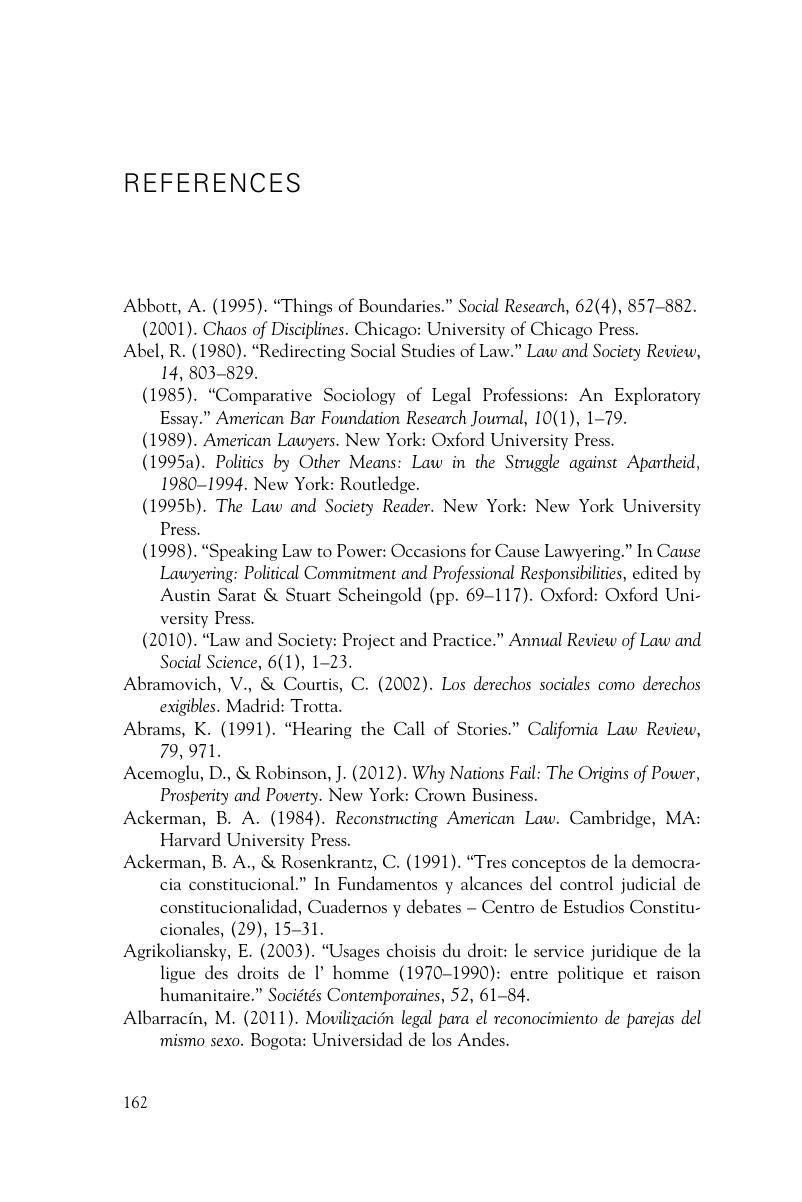Book contents
- The Powers of Law
- Cambridge Studies in Law and Society
- The Powers of Law
- Copyright page
- Dedication
- Contents
- Tables
- Preface
- Chapter 1 A Sociopolitical Understanding of Law*
- Chapter 2 The Symbolic Uses of Law
- Chapter 3 Legal Fields and the Social Sciences in France and the United States*
- Chapter 4 Sociopolitical Legal Studies in the United States
- Chapter 5 Sociopolitical Legal Studies in France*
- Chapter 6 Conclusion
- References
- Index
- Cambridge Studies in Law and Society
- References
References
Published online by Cambridge University Press: 20 April 2018
- The Powers of Law
- Cambridge Studies in Law and Society
- The Powers of Law
- Copyright page
- Dedication
- Contents
- Tables
- Preface
- Chapter 1 A Sociopolitical Understanding of Law*
- Chapter 2 The Symbolic Uses of Law
- Chapter 3 Legal Fields and the Social Sciences in France and the United States*
- Chapter 4 Sociopolitical Legal Studies in the United States
- Chapter 5 Sociopolitical Legal Studies in France*
- Chapter 6 Conclusion
- References
- Index
- Cambridge Studies in Law and Society
- References
Summary

- Type
- Chapter
- Information
- The Powers of LawA Comparative Analysis of Sociopolitical Legal Studies, pp. 162 - 211Publisher: Cambridge University PressPrint publication year: 2018

